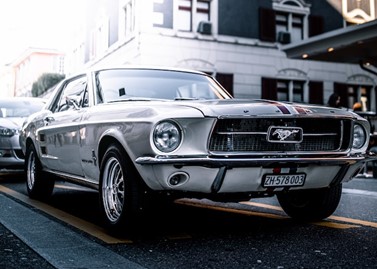According to a report by popular online automotive review site Edmunds.com, there about 40 million used vehicles sold every year.
This makes the automotive industry very competitive, so how can one restore a car to make it more appealing to potential buyers?
There are various factors that affect the value of a car, and these factors have a big influence on a buyer’s decision to buy or not. The main factors that affect the price of a used vehicle include condition, mileage, accident history, the color of the car, optional add-ons, and the seller’s location.
So, when restoring a car to sell, it’s essential to know the vehicle’s value then factor in the crucial aspects that can affect its price. Stuart Simonsen of Billings, MT provides effective strategies for restoring a car while maximizing its value for resale.
Top Restoration Strategies to Increase a Car’s Value
Consider the Market Trends
When looking to enhance a vehicle’s value, it’s crucial to understand current market trends. Knowing the current preferences, demands, and shifts in buyer behavior allows sellers to tailor their restoration efforts to meet buyer needs and wants.
For example, car buyers today prefer to look for and purchase vehicles online, according to a report by Simon Kucher, a global consultancy firm who specializes in commercial strategy and pricing. Because of this, sellers should take time to create quality listings for their vehicle to increase their chances of selling.
Increase the Car’s Investment Potential
When restoring a car, particularly classic and vintage ones, it’s important to consider their cultural and historical significance. Classic cars appreciate in value over time, so the way they are restored greatly impacts their investment potential.
Restoration efforts for a vintage car is all about striking the right balance between maintaining its classic aesthetic while incorporating modern comforts, making it a solid investment that will continue to appreciate over the years.

Avoid Personalization
It might be tempting to add various modifications to the car to add more personality to it. However, features like rear spoilers, oversized wheels, large stereo speakers, or printed seat covers don’t actually add value but actually lower it.
Buyers want a clean and simple vehicle; a blank canvas that they can personalize according to their own tastes and preferences.
Another thing to consider is the car’s color. While the color typically does not affect pricing, common and more neutral colors (like white, gray, silver) tend to sell faster compared to brighter colors like yellow, orange, or violet.
Bring in the Modern Comforts
Another effective restoration strategy to help increase a vehicle’s value is to prioritize technology and interior comfort. It goes without saying that buyers of today prefer cars that offer a convenient and comfortable driving experience.
Adding features such as backup cameras, navigation, Bluetooth technology, climate control, or new sound systems not only makes the vehicle more attractive to buyers but also increase its overall value.
When it comes to car restoration projects intended to make profit, it’s crucial to set aside personal preferences and focus on consumer demands and preferences. The key is “the simpler, the better”, and the car will sell faster than it was restored.
